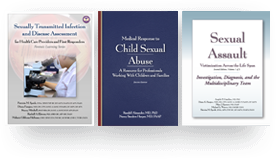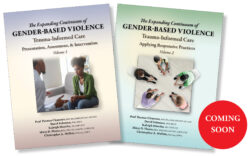Table of Contents
Section I: Communal and Societal Prevention
1. Preventing Child Maltreatment Through the Positive Community Norms Framework
2. The Power of Child Death Review to Prevent Maltreatment
3. Business: Increasing Involvement
4. Prevention Advocacy and Legislation
Section II: Agency and Organizational Approaches to Prevention
5. Preventing Child Maltreatment United States Military Community
6. The Federal Government’s Role in Child Maltreatment Prevention: History and Current Efforts
7. National Organizations Preventing Child Abuse and Neglect Before They Occur
8. Children’s Advocacy Centers and Child Abuse Prevention: A Natural Fit
Section III: Selected Models of Prevention
9. Early Home Visitation Services to Prevent Physical Child Abuse and Neglect
10. Strengthening Families Through Early Care and Education
11. Maltreatment Prevention Programming in Early Childhood: A Review of Models Delivered in Center-Based Settings
12. Shared Leadership®: An Innovative Approach to Child Abuse and Neglect Prevention
13. The PREVENT Program: A Public Health Approach
14. A Population Approach to the Prevention of Child Maltreatment: The Triple P—Positive Parenting Program System
15. SafeCare®: Preventing Child Neglect Through Scaling-Up and Examining Implementation Issues of an Evidence-Based Practice
Section IV: Prevention Among Special Populations
16. The Prevention of Maltreatment Among Children With Disabilities Through Early Identification and Comprehensive Provision of Services
17. Cultural Considerations in Prevention of Child Abuse and Neglect
Section V: International Approaches to Prevention
18. Children’s Rights to Prevention of and Protection From Violence and Maltreatment
19. Sure Star Local Programmes: Area-Based Preventative Intervention in England
20. Child Abuse Prevention in Canada
21. Child Abuse Prevention and Neglect Prevention: The Pakistani Scenario
22. Prevention of Child Abuse in Estonia
Section VI: Conclusion
23. The Future of Child Abuse Prevention
Index
As a member of an advocacy group and a practitioner concerned with child welfare, several chapters in this new reference stand out as particularly significant to my practice and to my colleagues in the field:
The Strengthening Families Initiative (addressed in Chapter 10) encourages professionals to engage families in the context of difficulties contributing to child maltreatment. The authors wisely caution readers that there is a high cost to delayed intervention and encourage appropriate engagement with and due respect for children and their families.
The Shared Leadership approach (addressed in Chapter 12) challenges hierarchical structures that separate parents and professionals. The authors promote respect for the competence of parents and their potential to contribute to changes in practice, policy, and education on child maltreatment.
The chapter on the United Nations Convention on Children’s Rights (Chapter 18) provides a thorough evaluation of the components of rights-based prevention. It is a valuable reminder that the principles of the UNCRC should be utilized in policy and practice for children in community and national contexts.
These chapters and this book should be read and discussed by professionals in medicine, social work, and law. The content of Research and Practices in Child Maltreatment Prevention, Volume 2 validates and promotes the underpinning values for best practices in the prevention of child abuse.
Sue Foley, MSW; MA; Accr MAASW;
Councilor ISPCAN; Member: BASPCAN, APSAC, IASA
Director
NSW Children’s Court Clinic
Sydney Children’s Hospital Network
Sydney, Australia
Research and Practices In Child Maltreatment Prevention, Volume 2: Societal, Organizational, and International Approaches is an invaluable resource for professionals from a variety of disciplines in child maltreatment prevention. It contains historical information and up-to-date research about the problem of child maltreatment. This expansive new reference provides the latest information and research about the tools, programs, and frameworks available to advance efforts in child maltreatment prevention across the social-ecological model. Through the expertise and perspective of its authors, it offers insight into the issues that make child abuse prevention such a complex issue.
Vicky Roper, MS
Director
Prevent Child Abuse Kansas
Kansas Children’s Service League
Wichita, Kansas
In order to make real progress in child maltreatment prevention, professionals, policymakers, and advocates are often required to participate in fields far removed from their usual areas of expertise and move into the realms of marketing and communication, leadership transformation, or business decision-making. This collection, in detailing current best practices in child abuse prevention, offers inspiration for practitioners willing to do so.
Research and Practices in Child Maltreatment Prevention, Volume 2: Societal, Organizational, and International Approaches provides, among a variety of information, examples from a cross-section of preventive approaches that constitute an impressive foundation for practical applications of child advocacy. Readers are introduced to successful strategies, detailed and innovative case studies, and proven models with clearly illustrated guidelines and recommendations. Built on current evidence, this data-rich resource will inspire those working in the field to enhance current practices.
Anthea Simcock, ONZM
CEO
Child Matters
Hamilton, New Zealand















